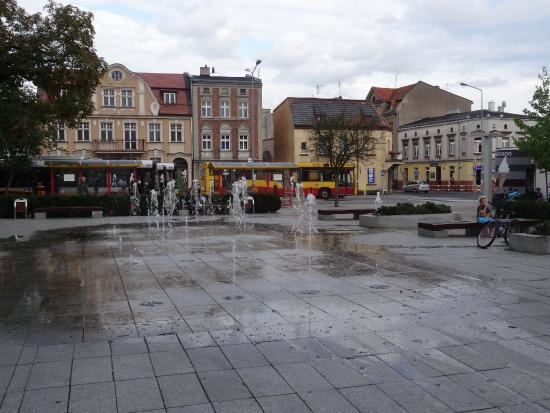Town rights 1638 Area 8.16 km² Local time Sunday 5:43 AM | County Poznań Established 14th century Time zone CET (UTC+1) Population 29,894 (2006) | |
 | ||
Weather 9°C, Wind SE at 10 km/h, 74% Humidity Voivodeship | ||
Swarzędz [ˈsfaʐɛnt͡s] (German: Schwersenz) is a town (miasto) in central Poland of 29,766 inhabitants and a mixed urban-rural commune (gmina miejsko-wiejska) of 40,166 inhabitants (2006 estimates). It is situated in the Poznań metropolitan area, in the Greater Poland Voivodeship (since 1999), having previously been in Poznań Voivodeship (1975–1998).
Contents
Map of Swarz%C4%99dz, Poland
General
The town lies directly on the route E92 and includes an aerosport facility run by the Poznań flying club, Wanda Modlibiowska. There are various companies based in the town, in particular carpentry and upholstering businesses. In addition a bicycle path from Poznań runs through the Dębiniec nature reserve and finally through the town to Pobiedziska.
History
The documentary evidence for a settlement on the site of modern-day Swarzędz comes from 1366. In 1377 there is mention of a rectory in the settlement.
Due to its advantageous location on the route from Poznań to Masovia the town developed well. The settlement was formerly in private ownership. Originally the property of the Łodziów family, from the 15th century it passed to the Górków family. In 1638 the town was granted town rights. In the 17th century, guilds for tradesmen and craftsmen were formed. In 1793 during the 2nd Division of Poland the town of some 2.508 inhabitants came under Prussian rule. In 1798 448 craftsmen lived in the town. Of these, 70 were cloth makers and 36 weavers. In 1807 Swarzędz became part of the Duchy of Warsaw, though when the Duchy collapsed in 1815, the town again fell under Prussian rule.
At the end of the 19th century carpentry flourished. In 1887 the town was connected to the railroad from Poznań to Września and thus received another important means of transport to other parts of the country, together with the road from Warsaw to Poznań. In 1919, after the First World War, Swarzędz was again returned to Poland, but was occupied by the Third Reich at the beginning of the Second World War. From 1941 to 1943 a labour camp for Jews was located here.
Places of interest
Local district
The Swarzędz municipality (Gmina Swarzędz) has an area of 102.09 km², on which 40,166 people (2006 est.) live in 21 townships. These include Bogucin, Garby, Gortatowo, Gruszczyn, Janikowo, Jasin, Karłowice, Kobylnica, Kruszewnia, Łowęcin, Nowa Wieś Poznańska, Paczkowo, Puszczykowo-Zaborze, Rabowice, Sarbinowo, Sokolniki Gwiazdowskie, Uzarzewo, Wierzenica, Wierzonka, and Zalasewo. Most of the municipality's population, however, live in its largest town, Swarzędz, which has a population of 29,766 and a land area of only 8.58 km². It is the fourth most densely populated city (miasto) in Poland at 3,469.2 inhabitants/km² (following Świętochłowice, Piastów, and Legionowo). It is also the most densely populated urban part of any Polish urban-rural gmina.
